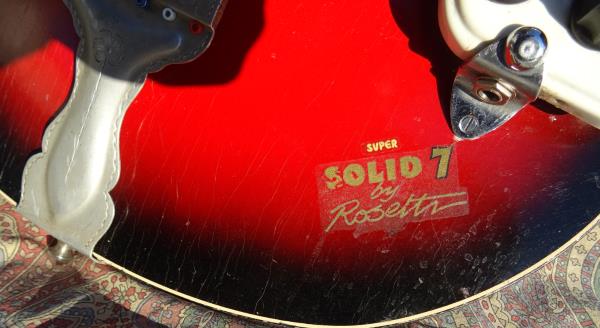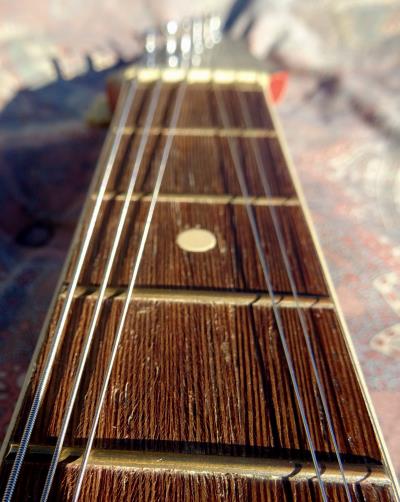

















Late 1950's EGMOND ROSETTI SUPER SOLID 7 Red Burst 3 pickups RARE OHC code VA167
Maple hollow closed body, Maple neck with a "C" profile, 44.5" wide nut, wenge fretboard, flat radius, and dot inlays. Original hardware, original pickup with three pickup on-off switches, volume and tone controls.There are dings and edge wear around the sides and there are some finish chips and dings throughout the back The neck is mostly smooth with surprisingly minimal wear and the headstock has some checking and dings, restoring pickguard. This is one Super Solid hollow body! Comes in Original Case.
https://www.youtube.com/watch?v=tVdt1PPSAm4
The Solid 7 was launched in the late 50's (around 1957). It was normally an ES113/22M2CA with 2 pickups. When having 3 pickups (and mostly a tremolo) it was an ES113/23M2CA and was also called the Super Solid 7. The name makes you think it was a solid body guitar, but it wasn't, it was a hollow body guitar without any sound hole. That made it lighter and more sloshy than a solid body guitar. The Bass 7 was the complementary bass to the Solid 7 and was an EB113/32M2CA. The body shape was, at first, as the one to the left above, i.e. with two symmetric cut-outs, on the guitars. And the bass had one cut-out, as the one to the right above. Then Egmond came up with the new style double cut-out, as the one in the middle above and that shape was later on all guitars in the Solid 7 series. These guitars had no truss-rods, so their necks were bent after some time. Later (maybe around 1964) the Solid 7 got a truss-rod, and then (probably 1966) it was renamed Flash.

The
Egmond Solid 7 (standard type) to
the left, with two cut-outs. Probably 1958 or 1959.
The
Egmond Super Solid 7 in the
mittle, with the new style double cut-out. Probably 1960.
The
Egmond Bass 7 (the
Solid 7 family bass) to
the right, with one cut-out. Probably 1960.
http://www.egmond.se/egmond_se_Solid7.html
http://www.egmond.se/egmond_se_History.html

Paul McCartney and his bass converted Solid 7